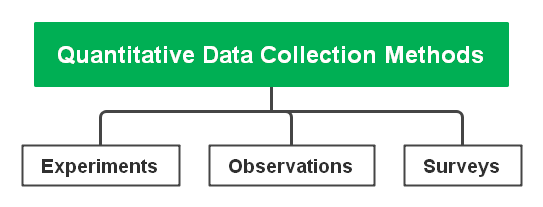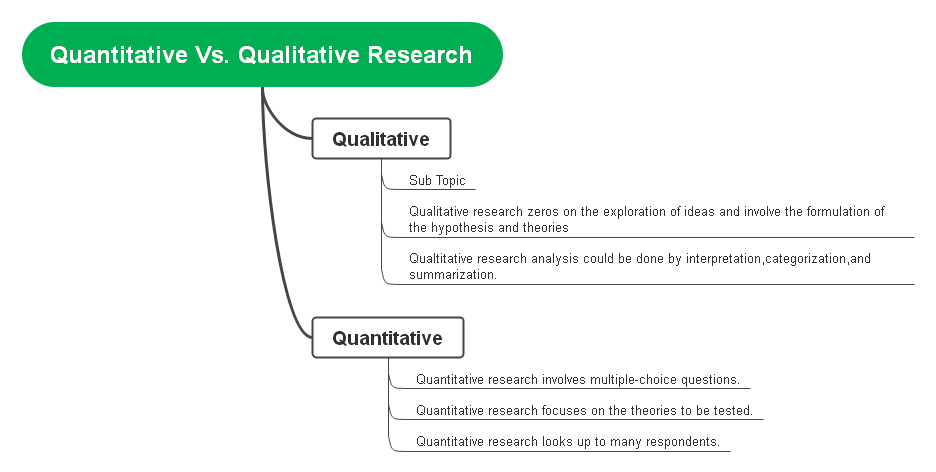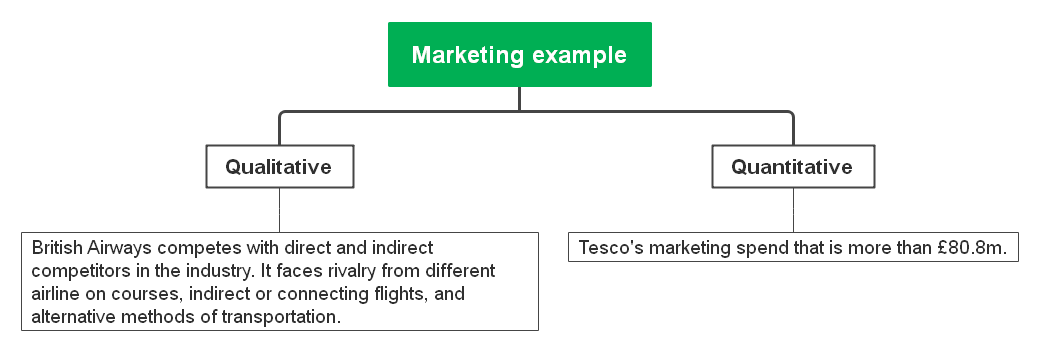Understanding Quantitative Vs. Qualitative Research with Mind Maps
Quantitative and qualitative research are reciprocal techniques to achieve results that are both profound and deep. To get the best outcomes from these techniques in your reviews and surveys, it is significant that you comprehend the qualitative vs. quantities research approach. In this article, you will learn what these two approaches are individual, the difference between the two of them, and the methods to do them.
Introduction
When we are working on the data collection and analysis the quantitative research deals with statistics and numbers, whereas qualitative research is based on the meanings and words. However, both of them are equally significant for research as they play different roles in order to equip different kinds of learnings.
What Is a Quantitative Research?
Quantitative research is one that deals with graphs, numbers, and other statistical data. In order to confirm or test the theories and assumptions, quantitative research is used. It can also be used to examine and establish facts that are generally about a certain topic.

What Is Qualitative Research?
As the qualitative research is expressed in stats, qualitative research is meant to fill the voids of depth. It refers to the understanding of experiences, concepts, and thoughts. This kind of research empowers you to assemble deep insights about topics that cannot be understood well.

Quantitative Vs. Qualitative Research – Method of Collection
There are multiple ways and methods to collect qualitative and quantitative research data. In case to answer your research properly, it is important that you know the use of the data collection method. There are a number of methods to collect the data that can be either quantitative or qualitative, like case studies, surveys, or observations. However, there are few methods that are common in data collection in one type or the other.
Quantitative Data Collection Methods
Experiments – To create the cause-and-effect relationships, the variables are at times manipulated and controlled, such situations are known as the experiment.
Observations – Observations refer to the situations where the subjects are under observation in an environment that is natural and variable cannot be controlled.
surveys – A list of mostly the multiple-choice questions that are circulated to a sample via online platforms, phone, or either in-person.
ExampleAn example of quantitative research is the review led to comprehend the measure of time a specialist takes to watch out for a patient when the patient walks into the clinic or hospital. A survey of patient satisfaction can be controlled to pose inquiries like what amount of time a specialist requires to see a patient, how frequently a patient strolls into a clinic, and other relevant questions.

Qualitative Data Collection Methods
Focus Groups – the consultations and considerations among a gathering of individuals about a discussion or topic to assemble the thoughts, ideas, or opinions that can be utilized for the research further.
Literature Review – Literature reviews refer to the kind of survey that is published works done by other authors.
Ethnography – It involved observation. In this method, one has to become part of the gathering or discussions where they can observe the behavior and culture. It can either be a company or a business.
ExampleIn order to do research on the culture or behavior of a tech-based company, you select the ethnography method. You will somehow step into the company and work for several months in order to collect the data using different strategies like:
- You get your employees to fill out the survey.
- You take notes while observing.
- You conduct some interviews to get an in-depth understanding and learnings.

When Should You Use the Quantitative or Qualitative Research
The two rules to analyze which research method to use, either quantitative research or qualitative research are:
- If you are to attempt a hypothesis or theory, then you can use the quantitative research method to test or confirm something.
- If you want to give an in-depth insight by highlighting the thoughts, experiences, or concepts, you need to apply qualitative research.
For most topics in research, you can pick a quantitative, qualitative, or a third type that is a mixed approach where you can use an infused version of both the quantitative and qualitative approach combined. There are a lot of factors to choose your type, but commonly, it relies upon research questions, deductive and inductive research strategy the choice between descriptive research, experimental or correlational. Moreover, they also depend upon certain practical details like access to respondents, money, availability of resources, or time.
Quantitative Vs. Qualitative Research
The difference between Quantitative and qualitative research includes:
- Qualitative research zeros on the exploration of ideas and involve the formulation of the hypothesis and theories. Whereas quantitative research focuses on the theories to be tested.
- The Qualitative research analysis could be done by interpretation, categorization, and summarization. At the same time, the quantitative research analysis is done through stats and math.
- Qualitative research is all about the in words, and quantitative research is based on graphs, tables, numbers, and other statistical data and information.
- Where qualitative research is about a few of the respondents, quantitative research looks up to many respondents.
- Qualitative research involves open-ended questions, and quantitative research involves multiple-choice questions.

Example:
Tesco’s marketing spends which is more than £80.8m is a good example of the quantitative data. Whereas, British Airways competes with direct and indirect competitors in the industry. It faces rivalry from the different airlines on courses, indirect or connecting flights, and alternative methods of transportation. The marketing strategy of British airways is another great understanding in terms of qualitative data.

Conclusion:
Quantitative and qualitative research both acts as important and integral strategies to work with. Where one is providing in-depth insight, the other is about stats. At long last, it is critical to say that there is no good and bad response to which strategies you pick. Now and then, you may wish to utilize one single technique, either quantitative research or qualitative research, and some of the time, you might need to utilize a few, whether every one of the sorts of a combination known as the mixed approach.


